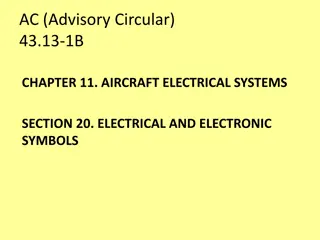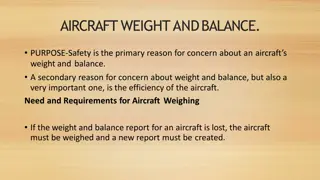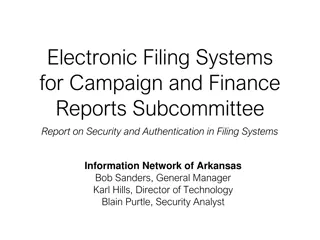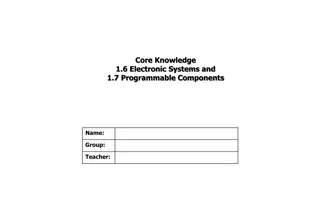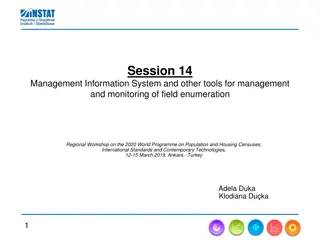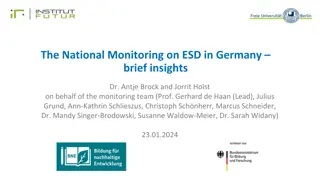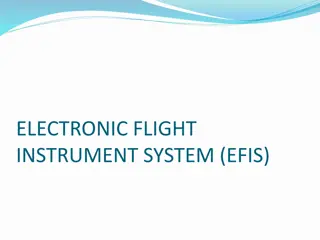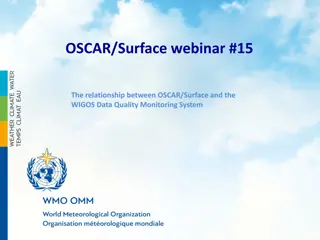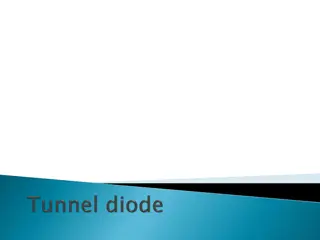Understanding Electronic Centralized Aircraft Monitoring (ECAM) Systems
Electronic Centralized Aircraft Monitoring (ECAM) is a vital system that collects data from sensors throughout the aircraft, processes it, and displays key information to pilots efficiently. The system is composed of various components like System Data Acquisition Concentrators (SDACs), Flight Warning Computers (FWCs), and Display Management Computers (DMCs). ECAM categorizes failures into different levels, with Level 3 failures being critical and requiring immediate crew action. It ensures the safety and functionality of the aircraft even in the event of failures.
Download Presentation

Please find below an Image/Link to download the presentation.
The content on the website is provided AS IS for your information and personal use only. It may not be sold, licensed, or shared on other websites without obtaining consent from the author. Download presentation by click this link. If you encounter any issues during the download, it is possible that the publisher has removed the file from their server.
E N D
Presentation Transcript
ELECTRONIC CENTRALIZED AIRCRAFT MONITORING(ECAM)
ECAM is actually a series of systems designed to work in order to display information to the pilots in a quick and effective manner. Sensors placed throughout the aircraft, monitoring key parameters, feed their data into two System Data Acquisition Concentrator (SDACs) which in turn process the data and feed it to two Flight Warning Computers (FWCs). The FWCs check for discrepancies in the data and then display the data on the ECAM displays through the three Display Management Computers (DMCs).
In the event of a fault the FWCs generate the appropriatewarning messagesand sounds. More vital systems are routed directly through the FWCs such that failures in them can still be detected even with the lossof both SDACs. The whole system can continue to operate even with a failureof one SDAC and one FWC.
Failures are classed by importance ranging from level 1 failures to level 3 failures. In the event of simultaneous failures the most critical failure is displayed first. The warning hierarchy is as follows: Level 3 Failures: red warnings, situations that require immediate crew action and that place the flight in danger. For example, an engine fire or loss of cabin pressure. They are enunciated with a red master warning light, a warning (red) ECAM message and a continuous repetitive chime or a specific sound or a synthetic voice. The chime can be silenced by pressing the master warning push button.
Level 2 Failures: amber cautions, failures that require crew attention but not immediate action. For example, air bleed failure or fuel fault. They have no direct consequence to flight safety and are shown to the crew through an amber master caution light, a caution (amber) ECAM message and a single chime. Level 1 Failures: Cautions, failures and faults that lead to a loss of system redundancy, they require monitoring but present no hazard. Examples include the loss of DMC3 when not in use. Level 1 failures are enunciated by a caution (amber) ECAM message only (no aural warning).
In addition to the three failure levels are following status messages: Advisory: System parameters' causes an automatic call of the relevant system page on the system display (S/D). The affected parameterpulsesgreen. 2. MEMO: Information: automatic selection of temporarily used. It causes a green, amber, or magenta message on engine warning display (E/WD). monitoring. It 1. Recalls functions which are normal or






